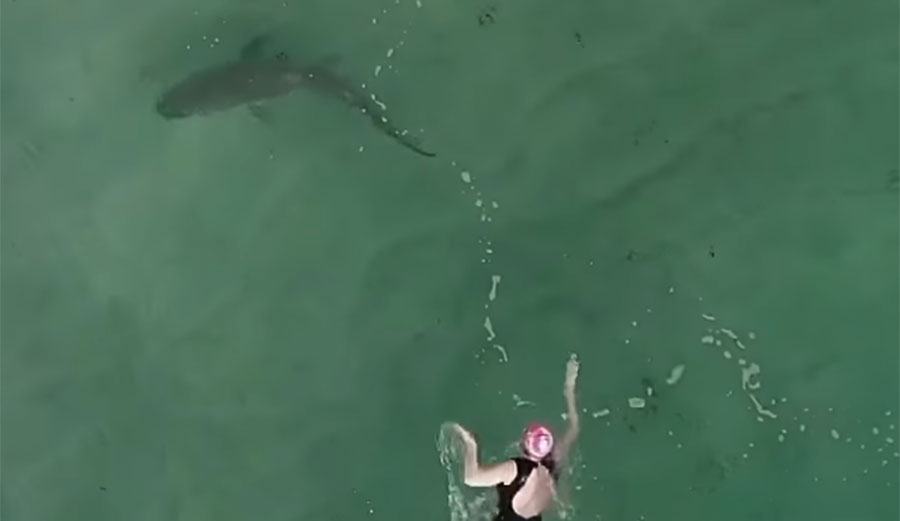
Drone Shark, an app used to warm surfers and swimmers of sharks in the area, has contributed to science. Image: Drone Shark/Instagram
A few years ago, an app hit phones in Australia. Its purpose was to warn ocean-goers when there were sharks in the area, and it quickly gained a huge following. The app, aptly-named Drone Shark, as of this writing, has nearly 360,000 followers on social media. And while it did indeed warn surfers and swimmers of sharks, it also helped researchers learn more about human and shark interactions, as well as marine life behavior that’s usually hard to study. A recently released paper that used Drone Shark App’s footage to learn more about marine animals’ behavior in areas that we share. “I’m feeling so proud that all my hard work has been acknowledged in the world of science,” said Jason Iggleden, the app’s creator.
“The drone observations include the behaviors of a variety of coastal marine wildlife species, including sharks, rays, fur seals, dolphins and fish, as well as migratory species such as migrating humpback whales,” the paper’s authors wrote. “Given the extensive effort and multiple recordings of the presence, behavior, and interactions of various species with humans provided by Drone Shark App, we explored its utility for providing biologically meaningful observations of marine wildlife.”
View this post on Instagram
Developed in 2017, Drone Shark “provides drone footage for surfers and shark alerts for beach-goer protection. In a bid to keep people safe on Australia beaches, the surf app uses high tech shark spotting drones to detect sharks and protect swimmers.”
A few years down the road and with a glut of footage in its banks, scientists realized that the information the app held could be extraordinarily useful. Since obtaining enough footage to make any real scientific progress takes time, utilizing a team of citizen scientists proved helpful. Drones are becoming more and more common for a variety of reasons that aren’t necessarily looking to add to data sets, but researchers can use that footage for their research.
Dr. Vanessa Pirotta of Macquarie University, along with a team of other scientists, analyzed 678 videos posted from the app to Instagram over 432 days of observation. They found 94 feeding events and 101 interactions with humans — luckily, none of the feeding events included humans — as well as some interesting footage of humpback and dwarf minke whales traveling north with their calves.
The whale footage in particular held some interesting information that proved a theory Dr. Pirotta came up with in 2019: whales are calving far away from where they normally would. “Traditionally these whales calve off North Queensland,” Stephen Luntz for IFLScience. “The fact that they are now sometimes giving birth thousands of kilometers to the south indicates something major has changed in the marine environment.”
View this post on Instagram
It’s likely that drones will be used more frequently in scientific research in the future, as they removed the need for close vessel approaches, which can be damaging to the animals we’re trying to study. It’s also likely that boats affect the animals’ natural behavior.
“Collaboration between scientists and citizen scientists such as those involved with Drone Shark App,” the authors explained, “can greatly and quantitatively increase the biological understanding of marine wildlife data.”

